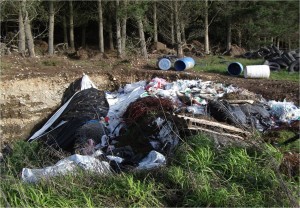Getting a handle on non-natural rural waste in Canterbury
 Rural waste is poorly understood. The types and volumes of waste produced and the way it is managed remainssomewhat of a mystery, unlike urban waste management, which has been the primary focus of waste managers for the last few decades.
Rural waste is poorly understood. The types and volumes of waste produced and the way it is managed remainssomewhat of a mystery, unlike urban waste management, which has been the primary focus of waste managers for the last few decades.
Logistically and financially, good waste management is a difficult proposition for the majority of farmers and, anecdotally, this results in the adoption of less-than-desirable waste management practices, which may be impacting on our environment.
In 2012, Environment Canterbury commissioned scoping studies to investigate the management of non-natural rural waste (non-organic, solid waste) generated by farms and agribusinesses in the region.
The preliminary studies found that very little rural waste data exists in New Zealand but, based on the limited information available, the amount of product entering the rural sector was not reappearing as waste.
Around the country, traditional rural waste management practices essentially involve burning, burying and bulk storing waste, leaving large quantities of waste unaccounted for and the potential for a long term environmental legacy.
The report found an estimated 490 tonnes of non-natural rural wastes plus 740 tonnes of organic (animal/offal wastes) and almost 26 tonnes of domestic waste is produced annually by the 53 farms.
This means approximately nine tonnes of non natural rural wastes are produced on average (mean) by each farm every year, and an average of 23.7 tonnes of total wastes is produced annually, including organic and domestic wastes.
Based on these averages, the study estimates that each year 81,000 tonnes of non-natural rural waste, 123,500 tonnes of organic/animal waste and 4,300 tonnes of domestic wastes are produced across Canterbury each year. This means over 209,000 tonnes of waste is produced in total, which roughly equates to the amount of residual waste produced by Christchurch City each year.
Of the participating farms, over 92% of wastes were burnt, buried and bulk stored, confirming that traditional disposal practices are still in use.
